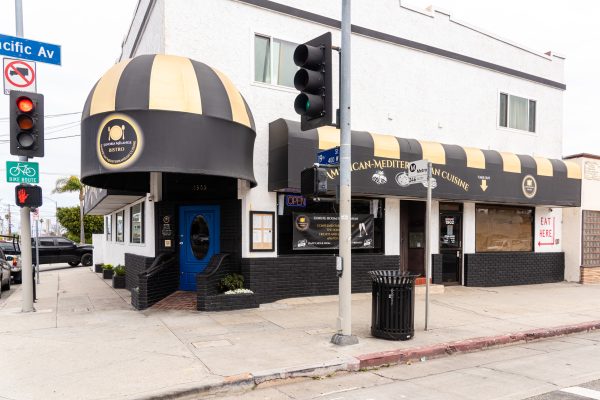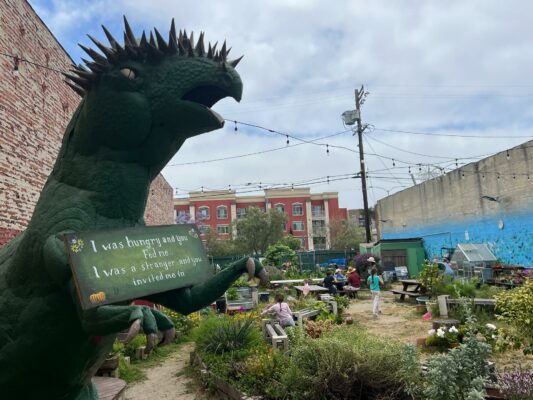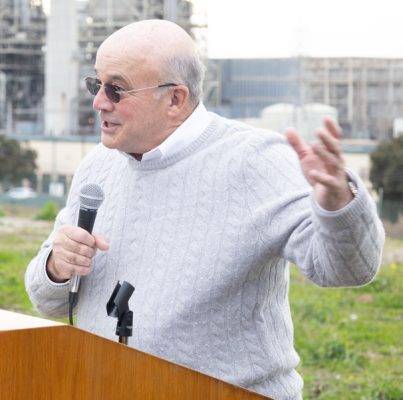
For more than a decade, there has been agitation within the Redondo Beach community to get rid of the old Harbor Drive power plant that’s dominated the shoreline since the 1940s. This year, the stir came to a head on March 5, as ballot box results rolled in and the city waited to learn the fate of Measure A.
The ballot initiative asked Redondo Beach voters to approve the rezoning of the lot that accommodates the plant, leaving its landowner, global energy company AES, with two choices: find another use for the property, or leave town.
Most everyone in Redondo Beach was familiar with Measure A. Activists in both camps – “Yes on Measure A” and “Measure A No Way” – waged dedicated campaigns to reach and win over Redondo Beach residents.
The condensed version of the story goes back to 2010, when the state of California outlawed the practice of using ocean water to cool hot turbines at power generation facilities. AES announced it would rebuild and refit its plant, and submitted an application to the California Energy Commission for approval to undertake the $500 million dollar project.
Some Redondo residents saw this as an opportunity to lobby for the removal of the plant that has occupied the waterfront for more than 70 years.
“I went up to Sacramento and met with senior analysts and…walked away knowing that yes, there is capacity to retire a plant the size of AES Redondo in our area. Those were my marching orders,” Measure A co-author and two-time councilmember Bill Brand said. “I knew we had to lobby.”
Lobbying ensued, and it was not always pretty.
For the first few months of 2013, Redondo Beach was littered with banners, some reading “Yes on Measure A,” others “Measure A No Way.” AES funded TV commercials, telemarketing campaigns, and a billboard on PCH. Measure A supporters and opponents covered websites and Facebook pages with highly charged commentary, often leveling personal attacks at those who disagreed with their respective positions.
Mailboxes were stuffed with literature both pro- and anti-Measure A; each side claimed its opponent’s brochures contain falsified and out-of-context information.
The story of Measure A was nuanced. This was not a battle positioning AES against all of Redondo Beach. A sliding scale measured public opinion; a good deal of gray area existed between those who supported Measure A and those who did not. Many people, for instance, vehemently opposed the presence of the power plant but chose not to endorse Measure A for fear that it would ensnare the city in costly, time-consuming litigation. Some were suspicious of AES’ motives and disagreed with the ethic of its costly outreach campaign. Still others supported Measure A but chose to vote against it because they disagreed with the way its supporters ran their campaign.
Four of 14 people who ran in this year’s mayoral and council election opposed the initiative. But what Measure A lacked in political backing, it made up for in support from groups of determined residents, their adamancy driven by a vision of a de-industrialized waterfront. The most active found leadership in Brand and Jim Light, the duo that collaborated to write the 27-page initiative that was Measure A.
The initiative’s supporters and opponents each took issue with the way the other waged its campaign – unsubstantiated allegations were leveled at AES for “buying votes” and anti-power plant activists were accused of “terrorizing residents.”
Public meetings that brought Measure A supporters and opponents together yielded booing and hissing, loud interruptions, and angry whispered exchanges. Power plant conversation assumed “us versus them” undertones, and campaigners on both sides of the fence pointed the finger at their rivals for “playing dirty.”
Measure A quite literally pitted neighbor against neighbor. Steve Aspel, who this year won his bid to be the city’s mayor, said upon his election that his first order of business in office would be healing the “wounds” Measure A inflicted on the community.
Then, after months of heavy politicking, the voting public made its choice. The result was a close shave: Measure A lost by just 257 votes.
For some, it was devastating. But they have not lost their vigor and dedication toward stopping the power plant project from being permitted. And even as the dust settles and Measure A fades into memory, the power plant remains a central issue for the city of Redondo Beach. Twice, the Sacramento-based California Energy Commission has flown to Redondo Beach for public meetings – first in October, and again in December.
The City Council still spends hours discussing the plant, and the City Attorney’s office is still up to its neck in legal work related to AES’ application. On Dec. 5, the City Council enacted a 45-day moratorium on the construction of any power generating facility within the city’s coastal zone, or between PCH and the Pacific Ocean. In doing so, the council hopes to send a clear message to the CEC.
The message, Aspel has said, is that regardless of disagreements over Measure A and which is the most sensible approach for the city to take, most people do agree that “Redondo would be a better place without a power plant.”









